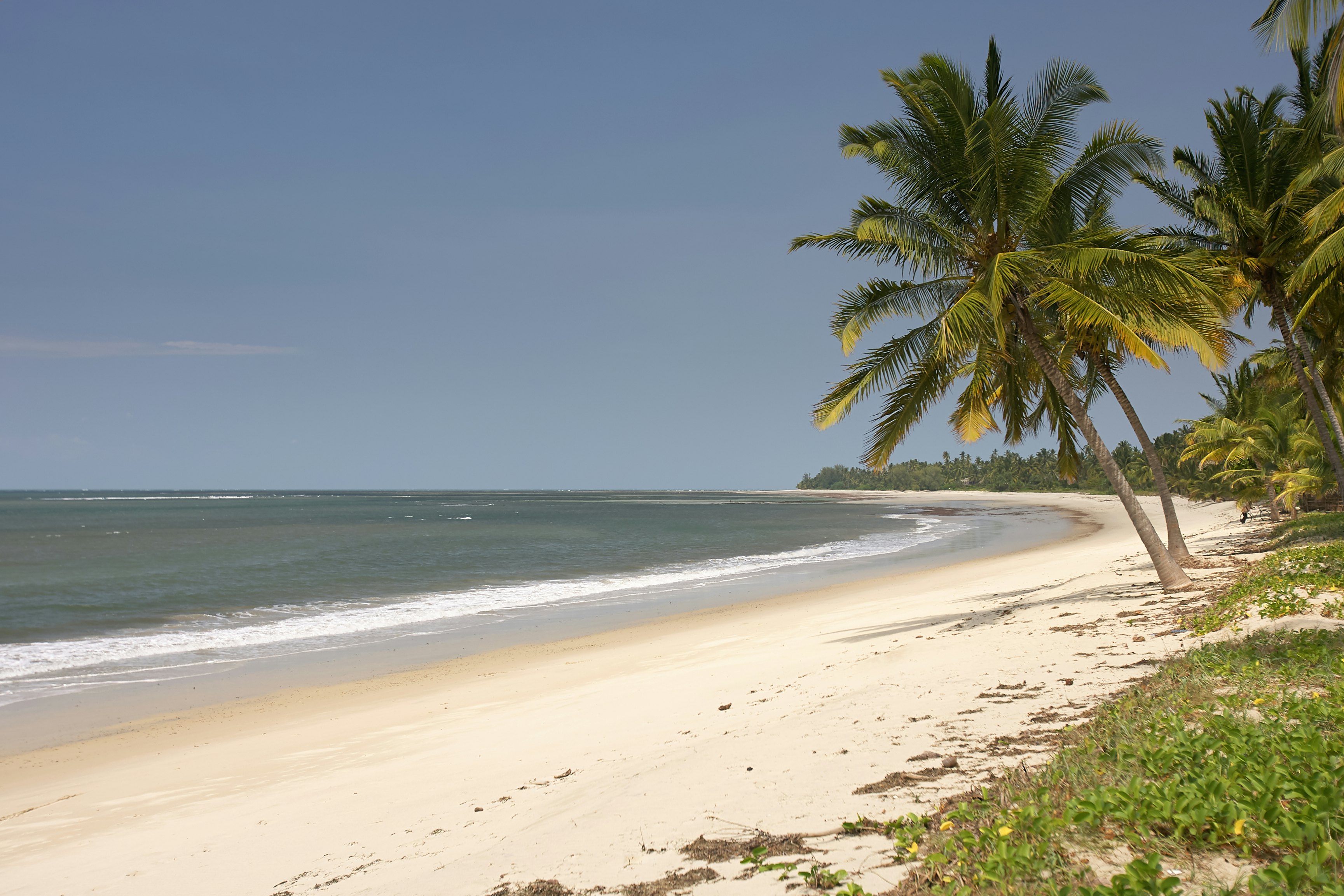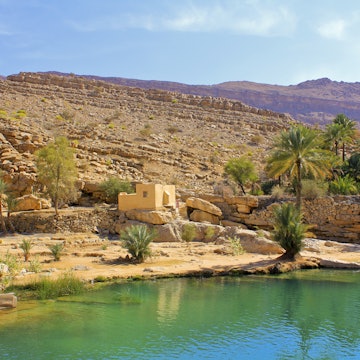

Hit the road with these top driving routes in Tanzania © Anastasiia Shavshyna / Getty Images
With wild safari experiences, grasslands, rainforests, woodlands and savannah plains in abundance, Tanzania has a lot of different landscapes to explore. And perhaps the best way to get around is by car.
Driving around this expansive country, you’ll encounter not just natural beauty but human diversity, too. Hundreds of ethnic groups call this East African country home, from the Sandawe in northern Tanzania, the Hehe in the Southern Highlands, the Chagga people who live on Mt Kilimanjaro’s slopes and the Zanaki close to Lake Victoria – and they all love welcoming visitors from afar.
Be warned that journeys by road in Tanzania can be lengthy and arduous, with stretches on paved roads in better-traveled areas followed by hours on dirt roads – but by taking your time, you’ll get more out of your journey. A slow, long drive is just the way to take in the vast range of history, culture and wild allure Tanzania offers. Here are the best road-trip routes.

1. The Northern Circuit
Best route for a classic safari
Arusha to Serengeti National Park; distance 306km (190 miles)
Arusha town – the starting point for some of Africa’s most memorable safaris – is where the best road trips in Tanzania begin. This itinerary takes you to Serengeti National Park, so you’ll need a 4WD vehicle that can handle off-road detours; such sturdy rides are easily available from various car-rental outfits in town. The road from Arusha to Tarangire National Park is smooth asphalt, but once you’re in the park be prepared to deal with unpaved roads that are often bumpy and spew dust everywhere.
On the way to Lake Manyara National Park, Mto wa Mbu is one of the first stops. This fun tropical town is a great place to meet local people and fellow travelers, buy souvenirs and fill up on snacks. It is a famously convivial place, reputed to be the only place in Tanzania where all 120 of the country’s ethnic groups live harmoniously together.
One of the last hunter-gatherer peoples in the world, the Hadza or Hadzabe live in the Lake Eyasi region. As the day dawns in this part of the world, Hadzabe men make their way through thick bush to gather honey or hunt game – an experience in which visitors can participate by asking around in town. Make time to spend a few days at Ngorongoro Conservation Area, a UNESCO World Heritage site, on your way Serengeti National Park. At 264 sq km (102 sq miles), the world-famous Ngorongoro Crater is the world’s largest caldera, with an astonishing concentration of wildlife in the valley below.

2. The wild southeast
Best road trip for unexpected landscapes
Dar es Salaam to Nyerere National Park; 256km (160 miles)
The country’s biggest city, Dar es Salaam offers a lively and quick introduction to Tanzanian life. There are ample car-rental agencies in town that offer cars for hire, with or without drivers. Unless you’re truly ambitious, we would recommend hiring a local expert to drive – one who knows the country’s roads and driving culture and who can help with any mechanical issues.
Setting out from the city, you’ll join the Tanzam Highway, which connects Dar es Salaam in the east to Mbeya in the west. The highway’s smooth surface takes you through Mikumi National Park and Iringa and on to Ruaha National Park. Though not as well known as Serengeti or the Ngorongoro, this remote rural park has striking landscapes: wild rocky outcrops, baobabs, mountains and seasonal rivers. Wildlife includes large elephant and hippo populations, as well as a huge array of birds.
From Ruaha, it’s a five-hour drive to the wild Udzungwa Mountains. At an altitude of over 2438m (8000ft) (remember to take deep, slow breaths), these forested landscapes offer a huge array of endemic plant species, as well as endemic animals like the Udzungwa red colobus monkey. The mountains are a veritable playground for hiking and worth spending a few days exploring.
Nyerere National Park (carved off for preservation from the massive Selous Game Reserve) is your final stop. Roads in Nyerere are rough, but it's one of the best national parks for incredible wildlife sightings, including antelope, buffalo and lions, which makes the tough doing worth it. If you're heading back to Dar es Salaam from here, expect the drive to take around five hours.

3. The Southern Highlands and Western Tanzania
Best long road trip
Dar es Salaam to Arusha; 648km (403 miles)
It will take a few weeks, even a full month, to fully take in this amazing journey across the Southern Highlands and Western Tanzania. From Dar es Salaam, you’ll head to Morogoro, a small town at the base of the Uluguru Mountains, where you can spend an afternoon hiking. If you’re up for some culture, spend the day with the Luguru people.
Next, you’ll drive through the Udzungwa Mountains en route to Iringa, home of the Wahehe people. Famous for defeating the Germans in 1891, this proud group bears a name said to come from their war cry, “hee twahumite, hee twahumite, he he he heeeeee” (“hey, we have come out”).
It’s a moderate drive from Iringa to Ruaha National Park, then along the Tanzam Highway to Mbeya. The journey onward from Mbeya offers plenty of excursions en route – including canoeing on Lake Nyasa or hiking on the hills of Tukuyu – though you should look forward to arriving in Kitulo National Park, well known for its sunflowers and gorgeous views.
If you’d like to explore this region of the country further, consider skipping Kitulo and going from Mbeya to Katavi National Park, one of the country’s most remote wilderness areas. It takes some effort to get here – and it is absolutely worth it. The large Katisunga Plain grabs your attention, as do the striking roan and sable antelope, which are absent in many other parts of the African continent.
As you continue to Arusha, stop at Gombe National Park, a sanctuary for habituated chimpanzees first made famous by anthropologist Jane Goodall. Within the lush forest, you’ll hear shrieks and whoops as the chimps pant-hoot to each other in cacophonous songs of affection.

4. Northeastern Tanzania
Best road trip for variety
Kilimanjaro Airport to Dar es Salaam; 598km (372 miles)
A road trip through Northeastern Tanzania caters to both economy and high-end travelers, with accommodations, food, culture, history and adrenaline-fueled activities for all budgets and tastes.
From Kilimanjaro Airport, you’ll make your way to Moshi town, a well-known trading post with lively, colorful markets. Visit a coffee plantation for a tour to learn how the ubiquitous beans are grown and harvested. If you’re keen, let your guide know you’d like to arrange a home visit with one of the Chagga families in the area. The livelihood of these keen agriculturists depends on growing banana, yams, maize and beans.
Next come the stark Usambara Mountains, which rise from the plain to the high heavens. Hikers, botanists and avid birders will feel at home here among the deep lavish valleys and rainforests, whose overlapping trees create verdant canopies. A few more days will allow you to venture even farther off the beaten track and explore the Pare Mountains – a detour not for the faint of heart. As this region is still opening to tourists, you’ll certainly need a knowledgable guide.
As you approach the coast (and consider a jaunt onward to Zanzibar), you’ll come across the small town of Pangani. This was once a significant port in the trade of enslaved people, bringing Asian, Arab, German and British merchants, whose influence can be seen in the faded architecture of the town. Meanwhile, the timeless, vocal calls of fishers can still be heard as they head out for the evening, casting their nets into the sea.
















